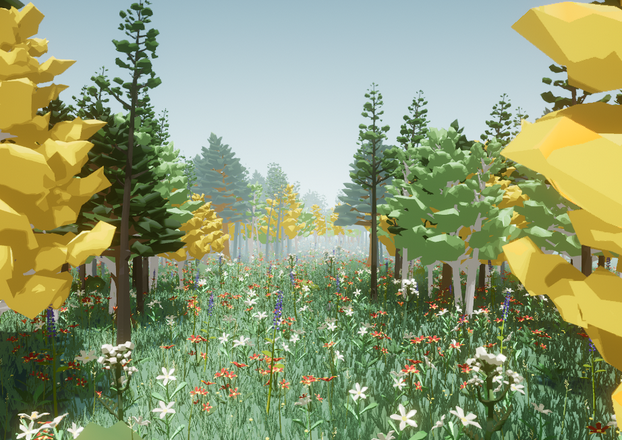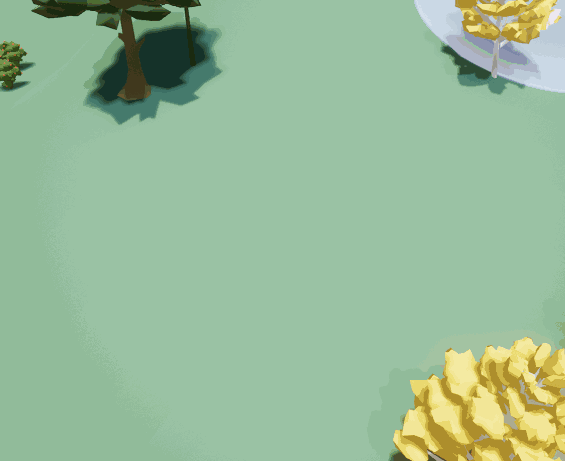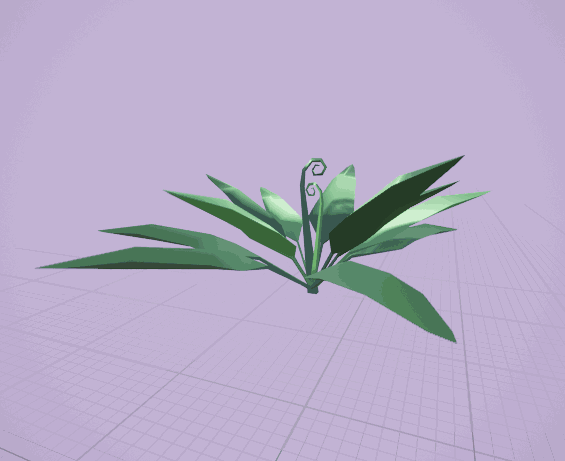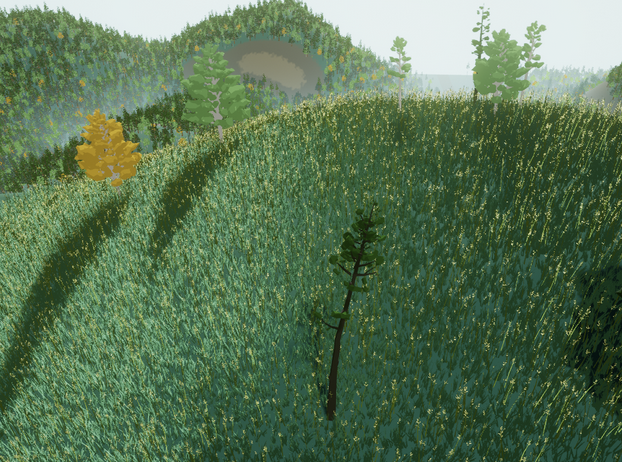Why Would Anyone Do Drugs When They Could Just Mow A Lawn?
December 1st, 2022
We’ve been busy modeling lots of beautiful trees and other plants for the biome that will be featured in a demo that we’re creating for grant applications and user testing. This post goes over how we create and use our foliage to produce a lush environment.
Deciding On Plants
When deciding on the type of environment we wanted to create for our initial demo, we drew inspiration from our local landscape and settled on creating a foothills biome. We researched the vegetation that is common in the Alberta-BC foothills area, and from that research we selected a number of trees and flowers to model.
Currently, flowers are non-interactable objects and are simply meant to inject colour and character into our scenery. As such, the flowers emulated in the foothills biome were chosen because they offer variation in colour and height. We did our best to keep the amount of detail for each flower to a minimum without oversimplifying the overall form of each plant. In doing so, the models look interesting up close which will allow us to use these models in establishing shots should we decide to use them in that capacity in the future. We then use the Level of Detail (LOD) option to minimize the number of triangles that are used in the models’ meshes when they are viewed from a distance.
We also modeled 3 different species of trees for the foothills biome and created a few versions of each tree to ensure that there is some variation across the biome.

Painting The Landscape
To add the foliage models to our game, we use Unreal’s foliage painting system. With this tool, we can create a palette of sorts containing all of our different foliage and paint any combination of plants. We can set the density of each type of foliage, specify the desired spacing between each piece, and configure randomized orientations and scaling. The plants are usually painted in groups as painting all of the foliage types at once does not produce a convincingly natural result.

Bulk painting of foliage
Performance
To improve performance, each foliage type is configured as an instanced static mesh. This means that there only needs to be 1 CPU to GPU communication for each type of mesh’s vertex data instead of 1 communication per mesh in general. Each piece of foliage will have its own position, rotation, and scale sent to the GPU at the same time that we send the vertex data.
Another simple way to improve performance is to not cast shadows from each foliage type. We currently only cast shadows with the trees and sizable shrubbery; the grass and flowers all have their shadows disabled. Since we use dynamic lighting for virtually everything in a scene (the sun and moon actors are constantly in motion), not casting shadows for smaller foliage results in a huge performance improvement.
To further increase performance, we utilize Unreal occlusion culling to not render foliage behind other foliage. In general we see a ~4ms reduction in frame rendering time when using this feature in a high foliage area.
Our real-time strategy style camera allows the player to zoom in and out as they please, so this provided us another opportunity to improve performance. We use LOD meshes to show a lower triangle count mesh when it is viewed at a distance. We are fairly aggressive in this approach and reduce a mesh’s triangles by 75% at each of the 3 LOD levels set. This means that our simple bush model would be composed of 236 triangles when viewed up close, 59 triangles at a medium distance, and a slight 14 triangles when viewed from far away. This reduction approach worked fairly well, but needed to be tweaked to be less aggressive for more delicate models such as our lily. The change in appearance between LOD levels can be stark when viewed up close, but when configured correctly it can be undetectable to the eye.

The fern's 3 LOD meshes
Wind
To add life to our scene, we have a wind mechanic which affects virtually all of our foliage. We use Unreal’s Material Parameter Collection to store our wind intensity and direction for use in materials. We have two different types of wind responses: tree wind and small foliage wind.
The tree wind material uses a sinusoid function to make the tree bend back and forth based on the strength of the wind. The bending motion is also influenced by the height of the tree, with the highest branches bending more and the area near the trunk hardly moving at all. The leaves or needles of each tree also have an extra function added to produce random perturbations from the wind.
The foliage wind material uses a similar sinusoid to the tree wind in order to bend things like grass and flowers in the wind. We also do some normal vector trickery to ensure that the grass looks nice when hit by the sunlight.
